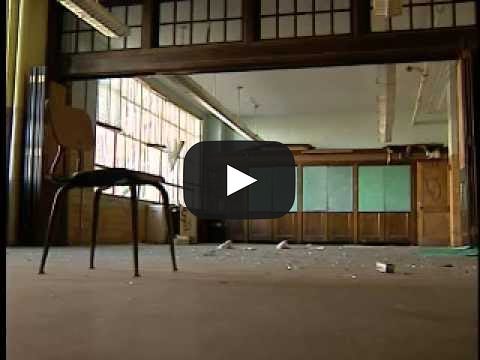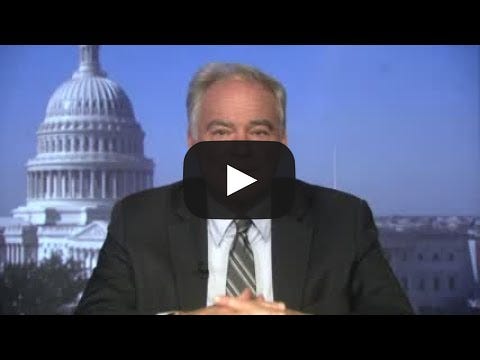by Jon Baliles
Virginia Union University announced recently that it would utilize several parcels it owns just north of the main campus to build a new $40 million development with up to 200 apartments (some market and some lower income) and possibly some homes and commercial space for students or the public, which would create a revenue stream for the school and shared profits with the New York developer.
But the development project would come with the cost of demolishing the old Richmond Community Hospital (RCH), first opened in Jackson Ward in 1902 at the dawn of Jim Crow by black physicians to treat Richmonders who were not allowed to be treated in white hospitals. The building that now sits on VUU property on Overbrook Road was purchased and opened in 1932.
Eric Kolenich wrote in the Times-Dispatch that “across the street was a neighborhood of prominent black residents, called Frederick Douglass Court, that later was home to civil rights attorney and federal judge Spotswood Robinson.” The hospital moved to Church Hill in 1980 and the building has been vacant ever since. A VUU spokesperson said the school determined there was no way to save the building. But the local preservation nonprofit Historic Richmond weighed in and has suggested that because of its historical significance, it could be incorporated into a larger project and still produce revenue for the university.
Michael Paul Williams wrote an excellent piece noting that “We live in a city chock-full of adaptive reuses, including of the former Westhampton School building by Bon Secours. Shouldn’t we be as passionate about preserving our bricks-and-mortar black history while it’s still above ground?”
That is why a group of Richmonders dedicated to preserving the derelict structure have organized to try and save the building. They are asking VUU to incorporate the structure into its plans. VUU needs the revenue stream that the project would bring, but the group and others believe there are ways to do it and preserve the building and its history.
Viola Baskerville, the former Richmond City Council member, state delegate and cabinet secretary for Gov. Kaine, has teamed up with activist Farid Alan Schintzius to try and save the property. Baskerville wrote a passionate letter to the Free Press last week, saying:
Demolition deprives us all of a true understanding of our history and shows a callous disregard in honoring the struggles of our ancestors. The conservation of black history should be a priority for everyone, especially those institutions under a HBCU banner. If black institutions don’t preserve black history, then we are lost.
Schintzius called the building “an illuminating and inspiring story” which was privately funded and run for decades, and he has started a Facebook group to rally support and convey the history.
Yesterday (Sunday) at the hospital site at 1209 Overbrook Road, the group hosted a meeting with other residents and locals to get recorded testimony from people who were born there, treated there, had surgery, took care of relatives, worked there or lived nearby or just want to support preservation. The memories and stories are still powerful and will serve as valuable lessons for future generations.
Baskerville told the Free Press the rally is “a way to hopefully inform the president of Virginia Union, the Board of Directors of the community of the Virginia Union, and of course the developer … of the significance of this site.”
In recent announcements, VUU President Hakim Lucas has made several announcements. He said on the day they announced the project (Feb. 2) that “Those who want to preserve Black History should look to VUU, as this development project shows how Virginia’s oldest HBCU is building on a 158-year legacy, celebrating history, and shaping the Commonwealth’s future,” he said, even though the plan calls for razing the hospital.
And after Sunday’s rally was announced, the Free Press reported that Lucas said, “The university welcomes broad participation in how we memorialize the important history of the site, as we plan for its future.” He mentioned the school’s work with the Black History Museum and VUU’s Center for African American History and Culture “which will play a lead role as VUU engages with the community as the development moves forward.”
While the building is not on the Virginia or national lists of historic landmarks, it could be given designated status (which wouldn’t prevent its demolition), according to Julie Langan, director of the Virginia Department of Historic Resources. Nor is the building in a city Old and Historic District (like Church Hill) which does provide some protection for buildings.
After 40 years of neglect, however, any restoration of the building will involve a high cost but would also be eligible for state and federal tax credits. Such was the case with the historically important Maggie Walker High School, just down the street from VUU’s campus. Walker was one of two all-black high schools in the city built in 1938 (on land VUU had sold to the city); the school was closed in 1990 and later reopened in 2002 as the regional Maggie Walker Governor’s School.
Watch this 1994 story from the CBS6 archives in 1994 about the dilapidated Maggie Walker School, wondering if the building would ever be repurposed:
Even though the roof had collapsed and demolition was an option in the 1990’s, then-Mayor Tim Kaine proposed in the late 1990’s to move the Governor’s School (which was holding classes in Thomas Jefferson High School) to a renovated Maggie Walker.
And instead of razing it to the ground, the community rallied and created a (then) unique funding structure. The $22 million required was split into thirds — a third of the total came from tax credits, a third from private donations, and a third came from the participating school districts. You can see Sen. Kaine briefly discuss the successful renovation of Maggie Walker (in the larger context of renovating schools) in a 2022 interview, as it remains a successful example of rescuing a vital and historically important building from the wrecking ball:
He points out it was a tall order, it was costly, it was needed, and it would be hard — but they found a way to get it done and the result was one of the best high schools in the country and an Art Deco masterpiece restored. And speaking of Art Deco, the Art Deco Society of Virginia is also calling for the preservation and restoration of the RCH. Art Deco Society of Virginia Board President Andy Nishida sent a letter to VUU President Lucas urging the school to preserve the old hospital rather than raze it. Nishida wrote:
It is fairly easy to demolish a building. However, it is near impossible to retain or even regain the loss of the aura, the reverence, the place in the hearts of many that hold that building dear.
That same mentality and attitude should be applied to the Richmond Community Hospital before VUU decides to summon the bulldozers.
— —
Unsurprisingly, when the RTD asked the current Mayor, who supports the overall VUU development project, if he agreed with VUU’s decision to raze the hospital — his spokesperson did not respond.
#leadership.
Jon Baliles is a former Richmond city councilman. Republished with permission from RVA 5×5.



Leave a Reply
You must be logged in to post a comment.